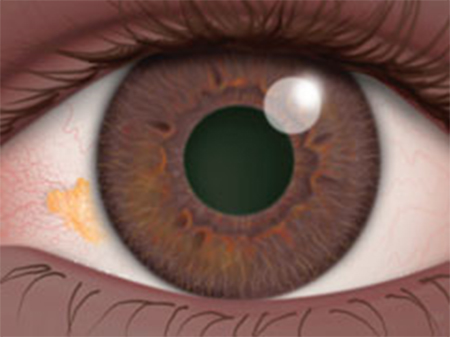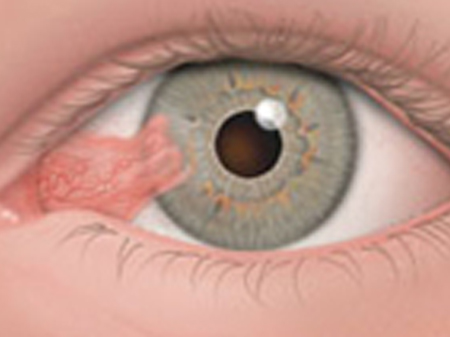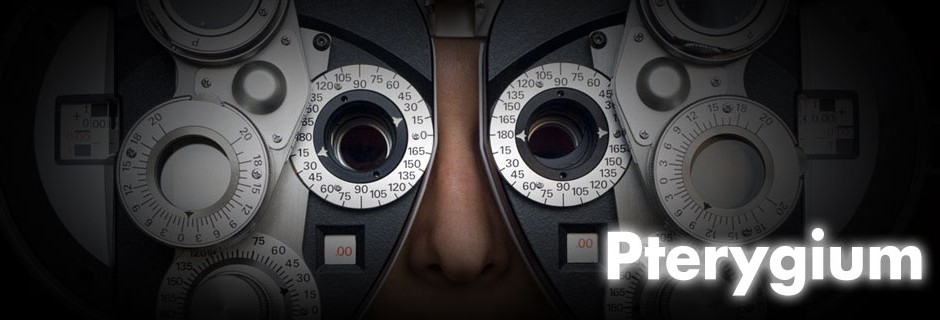Pterygium

Pterygium (pronounced tur-IJ-ee-um) and pinguecula (pronounced pin- GWEK-yoo-la) are growths on the cornea (the clear front window of the eye) and the conjunctiva — the thin, filmy membrane that covers the white part of your eye (sclera). Both growths are noncancerous and are fairly common.
A pinguecula (above) is a yellowish patch or bump on the conjunctiva, near the cornea. It most often appears on the side of the eye closest to the nose. It is a change in the normal tissue that results in a deposit of protein, fat and/or calcium. It is similar to a callus on the skin.
A pterygium is a triangular-shaped growth of fleshy tissue on the white of the eye that eventually extends over the cornea. This growth may remain small or grow large enough to interfere with vision. A pterygium can often develop from a pinguecula.
Some pterygia may become red and swollen on occasion, and some may become large or thick, making you feel like you have something in your eye. If a pterygium is large enough, it can actually affect the shape of the cornea’s surface, leading to astigmatism.

